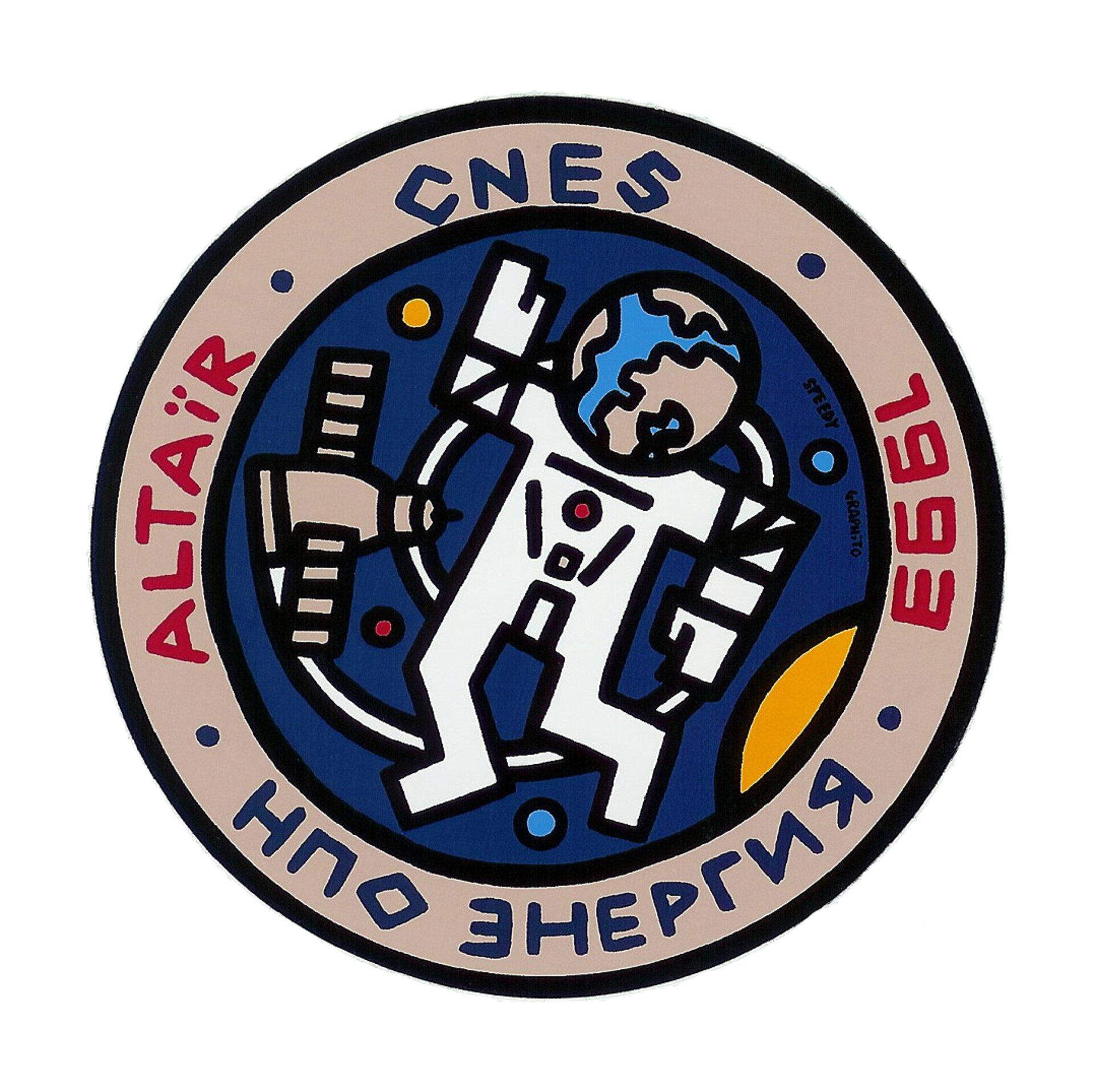Altaïr
MISSION STATISTICS
Mission name: Soyuz TM-17
Call sign: Sirius
Number of crew members: 3 launched / 2 landed
Launch:
1 July 1993, 12:32:58 UTC, Baikonur LC1
Landing:
14 January 1994, 08:18:29 UTC, 130 km W of Karaganda (49.62 N; 70.12 E)
Duration: 196 days, 17 hours, 45 minutes, 22 seconds
Number of orbits: ~3 070
CREW
Launched
- Vasili Tsibliyev (1)
- Aleksandr Serebrov (4)
- Jean-Pierre Haigneré (1) - France
Landed
- Vasili Tsibliyev (1)
- Aleksandr Serebrov (4)
(1) number of spaceflights each crew member has completed, including this mission
MISSION HIGHLIGHTS
Soyuz TM-17 was the 17th expedition to the Russian Space Station Mir.
At 7:37:11 a.m. Moscow time (MT), on 14 January 1994, Soyuz TM-17 separated from the forward port of the Mir station. At 7:43:59 a.m., the Mission Control Center in Korolev (TsUP) ordered Tsibliyev to steer Soyuz TM-17 to within 15 metres of the Kristall module to begin photography of the APAS-89 docking system. At 7:46:20 a.m., Tsibliyev complained that Soyuz TM-17 was handling sluggishly. Serebrov, standing by for photography in the orbital module, then asked Tsibliyev to move the spacecraft out of the station plane because it was coming close to one of the solar arrays.
In Mir, Viktor Afanasyev ordered Valeri Polyakov and Yuri Usachyov to evacuate to the Soyuz TM-18 spacecraft. At 7:47:30 a.m., controllers in the TsUP saw the image from Soyuz TM-17's external camera shake violently, and Serebrov reported that Soyuz TM-17 had hit Mir. The TsUP then lost communications with Mir and Soyuz TM-17. Intermittent communications were restored with Soyuz TM-17 at 7:52 a.m. Voice communications with Mir were not restored until 8:02 a.m. Inspection of Soyuz TM-17 indicated no serious damage. In this connection, the Russians revealed that they had studied contingency reentries by depressurized spacecraft in the wake of the Soyuz 11 accident. The Mir cosmonauts did not feel the impact, though the station's guidance system registered angular velocity and switched to free flying mode.
Later analysis indicated that the right side of the orbital module had struck Mir two glancing blows 2 seconds apart. The impact point was on Kristall, near its connection to the Mir base block. The cause of the impact was traced to a switch error: the hand controller in the orbital module which governed braking and acceleration was switched on, disabling the equivalent hand controller (the left motion control lever) in the descent module. Tsibliyev was able to use the right lever to steer Soyuz past Mir's solar arrays, antennas, and docking ports after it became clear impact was inevitable.





